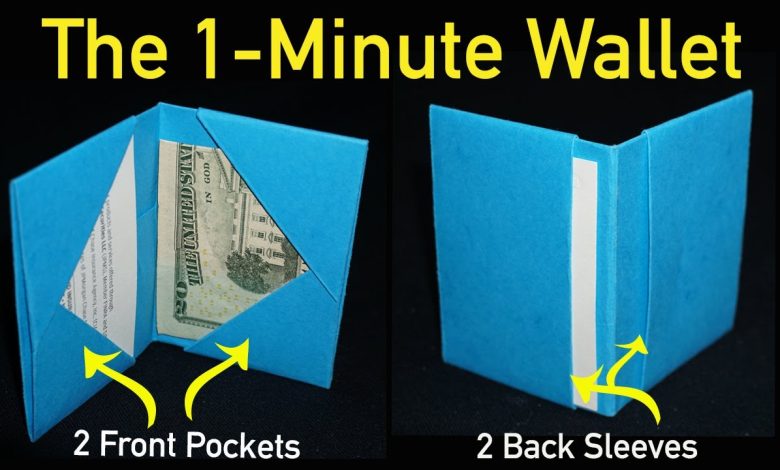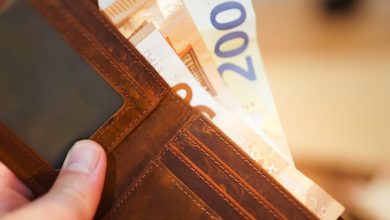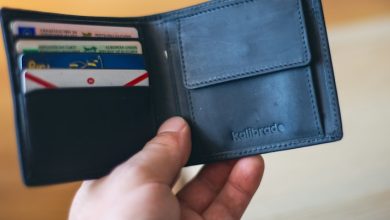How to Set Up a Paper Wallet

- What is a paper wallet and why use one?
- Benefits of using a paper wallet for storing cryptocurrency
- Step-by-step guide to creating a paper wallet
- Tips for securely storing and accessing your paper wallet
- How to transfer cryptocurrency to and from a paper wallet
- Common mistakes to avoid when setting up a paper wallet
What is a paper wallet and why use one?
A paper wallet is a form of “cold storage” for cryptocurrencies, which means that the private keys are stored offline, making it less vulnerable to hacking or cyber attacks. It consists of a physical piece of paper that contains the public address for receiving funds and the private key for accessing and spending those funds. Paper wallets are often used as a secure way to store cryptocurrencies for the long term.
There are several reasons why one might choose to use a paper wallet:
- Security: Paper wallets are considered one of the most secure ways to store cryptocurrencies since they are not connected to the internet, reducing the risk of hacking.
- Control: With a paper wallet, you have full control over your private keys, which means you are not relying on a third party to secure your funds.
- Long-term storage: Paper wallets are ideal for storing cryptocurrencies for an extended period without the need for frequent access.
- Offline storage: By keeping your private keys offline, you are protecting them from online threats such as malware or phishing attacks.
While paper wallets offer enhanced security and control, they also come with some risks. If the paper is lost, damaged, or stolen, you could lose access to your funds permanently. It is essential to store your paper wallet in a safe and secure location, such as a safe deposit box or a home safe. Additionally, it is crucial to ensure that the paper wallet is generated securely and that no one else has access to your private key.
Benefits of using a paper wallet for storing cryptocurrency
There are several benefits to using a paper wallet for storing your cryptocurrency. One of the main advantages is the enhanced security it provides. Paper wallets are not connected to the internet, making them immune to hacking and online theft. This offline storage method reduces the risk of unauthorized access to your funds, giving you peace of mind knowing your assets are safe.
Another benefit of paper wallets is their simplicity and ease of use. Creating a paper wallet is straightforward and does not require any technical expertise. All you need is a printer and a secure location to store your printed wallet. This accessibility makes paper wallets a popular choice for those new to cryptocurrency or looking for a hassle-free storage solution.
Additionally, paper wallets offer a high level of control over your funds. With a paper wallet, you are the sole custodian of your private keys, eliminating the need to rely on third-party services to manage your assets. This self-managed approach aligns with the decentralized nature of cryptocurrency, giving you full autonomy over your investments.
Furthermore, paper wallets are a cost-effective storage option. Unlike hardware wallets that require a financial investment, paper wallets can be created for free using online generators. This affordability makes paper wallets an attractive choice for those looking to securely store their cryptocurrency without breaking the bank.
Step-by-step guide to creating a paper wallet
To create a paper wallet, follow these simple steps:
- Start by generating a new wallet address using a trusted cryptocurrency wallet generator.
- Print out the wallet address and private key on a piece of paper. Make sure to use a printer that is not connected to the internet to ensure security.
- Once printed, consider laminating the paper to protect it from damage or wear over time.
- Store the paper wallet in a safe and secure location, such as a safe deposit box or a home safe.
- Remember to keep the paper wallet confidential and away from prying eyes to prevent unauthorized access to your funds.
By following these steps, you can create a secure paper wallet to store your cryptocurrency safely.
Tips for securely storing and accessing your paper wallet
When it comes to securely storing and accessing your paper wallet, there are a few key tips to keep in mind to ensure the safety of your cryptocurrency:
- Keep your paper wallet in a safe and secure location, such as a safe deposit box or a home safe.
- Make multiple copies of your paper wallet and store them in different secure locations.
- Do not store your paper wallet in a digital format, as this can make it vulnerable to hacking.
- When accessing your paper wallet, make sure to do so in a private and secure location to prevent others from seeing your private keys.
- Consider using a passphrase in addition to your private key for an extra layer of security.
By following these tips, you can help ensure that your cryptocurrency remains safe and secure while stored in a paper wallet.
How to transfer cryptocurrency to and from a paper wallet
To transfer cryptocurrency to and from a paper wallet, you will need to follow a few simple steps. When transferring cryptocurrency to a paper wallet, you will first need to access your digital wallet where your cryptocurrency is stored. From there, you can send the desired amount of cryptocurrency to the public address on your paper wallet. Make sure to double-check the address to avoid any errors in the transfer process.
When transferring cryptocurrency from a paper wallet, you will need to access the private key associated with the wallet. This key is essential for authorizing the transfer of cryptocurrency from the paper wallet to your digital wallet. Once you have the private key, you can import it into your digital wallet and initiate the transfer of cryptocurrency.
It is important to note that paper wallets are considered a secure way to store cryptocurrency offline. However, it is crucial to keep your paper wallet in a safe and secure location to prevent any unauthorized access. Additionally, make sure to create backups of your paper wallet and private key to avoid any potential loss of funds.
By following these steps, you can easily transfer cryptocurrency to and from a paper wallet securely and efficiently. Remember to always exercise caution and diligence when handling your cryptocurrency assets to ensure their safety and security.
Common mistakes to avoid when setting up a paper wallet
When setting up a paper wallet, there are several common mistakes that you should avoid to ensure the security of your cryptocurrency. Here are some key errors to watch out for:
- **Using an insecure printer:** Make sure to use a secure printer when printing out your paper wallet. Avoid using public printers or printers that are connected to the internet, as this can expose your private keys to potential hackers.
- **Not making multiple copies:** It’s essential to create multiple copies of your paper wallet and store them in secure locations. If you lose or damage your only copy, you could lose access to your funds permanently.
- **Forgetting to encrypt your wallet:** Encrypting your paper wallet adds an extra layer of security by requiring a password to access your funds. Make sure to encrypt your wallet before printing it out.
- **Not verifying the wallet address:** Before transferring any funds to your paper wallet, double-check the wallet address to ensure that it is correct. Sending cryptocurrency to the wrong address can result in permanent loss of funds.
- **Exposing your private key:** Keep your paper wallet’s private key private at all times. Avoid sharing it with anyone or storing it in a location where it could be easily accessed by others.
By avoiding these common mistakes, you can set up a paper wallet securely and protect your cryptocurrency investments from potential threats.



